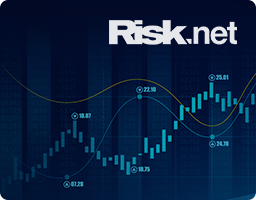Settlement risks are relevant to foreign exchange markets, where payments are executed in different currencies. Most quants ignore legal and regulatory issues when calculating settlement risks. Yet, taking time to investigate these issues can lead to astonishing results.
Challenging the basic assumptions and examining things from first principles allowed Alexander Sokol, Chief Executive Officer of technology vendor CompatibL, Leif Andersen, Global Co-head of the quantitative strategies group at Bank of America Merrill Lynch, and Michael Pykhtin, a manager in the quantitative risk team at the Federal Reserve Board in Washington, DC, to reveal the dangerously high levels of exposure: as shown in their paper “Does Initial Margin Eliminate Counterparty Risk?”, the remaining exposure is between five and ten times higher than previously thought.
In 2014, by combining together their independent efforts to discover the complexity of the margining process, the quants built a model to quantify settlement risk. One of the conclusions of their paper is that massive exposures can arise in certain periods of margining cycles.
For Alexander it all started from the knowledge of how his clients calculate counterparty credit risk exposures including the valuation adjustments known as XVAs (the family of value adjustments applied to derivatives trade that reflect counterparty, own-default, funding, capital and margin risk).
“We deal with many banks, we see what people do for XVAs, and I saw that every single bank treats it slightly differently. Some people were not expecting any cashflows during the margin period of risk, other people said they were expecting to pay and receive cashflows of the trade but not the margin, whereas some people were expecting only to pay them,” says Alexander Sokol. “It’s almost random. It depends on who the quant is at the bank to make that choice, but these numbers end up on the financials of the bank – it is material information for shareholders. So, it seemed like it was the right time to figure out the right approach.”
It took months to collect the data, analyze it and crystalize the four-parameter risk assessment model so it was capable of not only quantifying settlement risk but also capturing behavioral elements introduced by credit support annexes (CSA) executed based on ISDA requirements.
The paper changed the way in which market participants perceive exposures: today, they also take account of who pays whom and under which circumstances. As a result, the accuracy of exposure assessment has much improved.
The solution suggested by Alexander and later included in the paper was to move from one-day trading margin calls with a two-day lag to margin calls made the same day. This requires amending counterparties’ CSAs, but market players and regulators have already taken note of the solution: the European Central Bank included a section on margin and trade payments in its guidance on the review of internal counterparty risk models launched in 2015.
For Alexander Sokol, and CompatibL in particular, including quantitative research and innovation in trading and risk analytics is a subject of ongoing interest. They will continue to explore the issues and provide the best counterparty risk solutions to their clients.
About Risk Awards
Every year, Risk.net, the world’s leading source of in-depth news and analysis on risk management, derivatives and regulation, brings together the entire market to recognize the achievements of its many participants and those of the industry as a whole. Risk Awards are the longest-running and most prestigious awards for firms and individuals involved in the global derivatives markets and in risk management.


